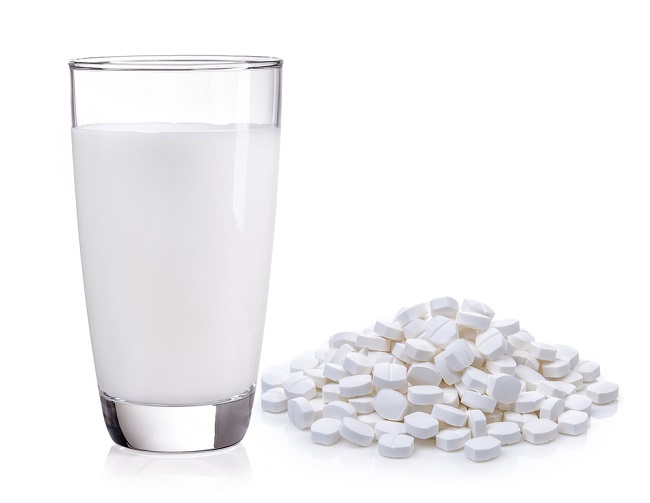Sotalol is a drug to treat tachycardiaaventricular or supraventricular tachycardia. This drug can also be used in the treatment of atrial fibrillation, which causes severe symptoms, such as difficulty breathing. This medicine should only be used according to a doctor's prescription.
Sotalol belongs to the beta blocker class of drugs that have antiarrhythmic effects. In low doses, this drug will work by blocking beta receptors in the heart and blood vessels. Thus, the heart rate will slow down.

In higher doses, sotalol has a class III antiarrhythmic effect and works by blocking potassium channels to normalize heart rhythms.
sotalol trademark: Sotalol Hydrochloride
What is Sotalol
| group | Prescription drugs |
| Category | Beta blockers |
| Benefit | Treat some arrhythmic conditions, such as ventricular tachycardia or supraventricular tachycardia |
| Consumed by | Adults and children over 12 years old |
| Sotalol for pregnant and lactating women | Category B: Animal studies have not shown any risk to the fetus, but there are no controlled studies in pregnant women. Sotalol can be absorbed into breast milk, should not be used during breastfeeding. |
| Drug form | Tablet |
Warning Before Taking Sotalol
Sotalol should only be used as prescribed by a doctor. Here are some things you need to pay attention to before taking sotalol:
- Do not take sotalol if you are allergic to this drug. Tell your doctor about any allergies you have.
- Tell your doctor if you have or are suffering from it long QT syndrome or other dangerous heart rhythm disturbances, such as severe bradycardia or AV block. Sotalol should not be given to patients who are suffering from this condition.
- Tell your doctor if you have or have recently had a heart attack.
- Tell your doctor if you have or have had kidney disease, severe diarrhea, liver disease, low blood pressure, lung disease, heart disease, hyperthyroidism, diabetes, Raynaud's syndrome, low levels of potassium in the blood, or acidosis
- Tell your doctor if you are pregnant, breastfeeding, or planning a pregnancy.
- Tell your doctor if you are taking any other medicines, including herbal medicines and supplements.
- If you are planning to have surgery or certain medical procedures, tell your doctor that you are taking sotalol.
- See your doctor right away if you have an allergic reaction to the drug, serious side effects, or an overdose after taking sotalol.
Dosage and Instructions for Use of Sotalol
The dose of sotalol given by the doctor depends on the health condition and age of the patient. Here is the explanation:
Condition: Management of ventricular tachycardia in an emergency
- Mature: Initial dose 80 mg, 2 times a day. The dose may be increased every 3 days to 240–320 mg per day. Maintenance dose 160–320 mg daily in divided doses. The maximum dose is 480–640 mg per day.
Condition: Supraventricular tachycardia or ventricular tachycardia
- Mature: The initial dose is 80 mg per day. The dose can be increased every 2-3 days. Maintenance dose 160–320 mg daily in divided doses.
The dosage for children will be determined by the doctor based on the child's weight and age.
How to Take Sotalol Correctly
Take sotalol as recommended by your doctor and always read the instructions for use listed on the drug packaging. Do not reduce or increase the dose without consulting your doctor first.
Sotalol can be taken before or after meals. If you forget to take sotalol, take it as soon as you remember. If it is near the time of your next dose, skip the missed dose. Do not double the dose of sotalol to make up for a missed dose.
At the beginning of treatment, you will be asked to be in the hospital to monitor your condition, response to therapy, and side effects that may arise from taking sotalol.
During treatment with sotalol, you will be asked to check your heart record or ECG periodically.
Store sotalol at room temperature and place in a closed container. Keep this medicine away from direct sunlight and out of reach of children.
Interactions of Sotalol with Other Drugs
The following are a number of interactions that can occur if sotalol is taken at the same time as other medicines:
- Increased risk of bradycardia if taken with digoxin
- Increased risk of arrhythmias if taken with diuretics, haloperidol, macrolide antibiotics, or quinolones
- Increased risk of developing hypertension if taken with clonidine
- Decreased effectiveness of insulin or antidiabetic drugs
- QT prolongation if taken with phenothiazine, terfenadine, or astemizole
- Increased risk of side effects when taken with diltiazem
Side Effects and Dangers of Sotalol
There are several side effects that can occur after taking sotalol, including:
- Dizziness or headache
- Unusual tired
- Diarrhea
- Slow heart rate
- Decreased sex drive
Check with a doctor if the complaints mentioned above do not go away or get worse. See your doctor right away if you have an allergic reaction to a drug or experience more serious side effects, such as:
- Chest pain
- Dizzy like you want to faint
- Slow, faster, or irregular heart rate
- Tingling or numbness in the hands and feet
- Swelling of the legs
- Hard to breathe









